Health Focus – Parvo virus in dogs and cats
[ad#Commission Junction Pet Store.com Promotion till july 31st]
PARVO VIRUS
What is Parvo Virus?
Symptoms of Parvo Virus
Diagnosis
Treatment
Prevention
Conclusion
What is Parvo Virus?
Canine Parvo virus emerged in the 1970’s as a killer virus in dogs. It mutated from a virus that infected cats (causing feline Panleukopaenia) and began to infect dogs. Recently a new strain, Parvo virus type C has emerged, which has once again caused a devastating loss of life in young dogs and puppies. Parvo virus is a highly contagious member of the Parvoviridae family and it makes dogs sick by killing off all the cells that line the intestine, which then slough off causing a massive bloody diarrhea. It also suppresses the immune system, so that the dog is also not able to fight the infection as white blood cells stop being produced. It may also affect the heart in young puppies. Before 1980, most canine Parvovirus that caused disease was Type 2 (CPV-2). After 1980, CPV-2 was replaced by CPV-2a, and in 1986, another variation called CPV-2b appeared. Recently, a new strain, CPV-2c has been detected. CPV-2b is still the most common Parvovirus causing disease in the dog. Regular vaccinations help to control this disease but despite being vaccinated, dogs still die from Parvo viral enteritis. (3)
Parvoviruses are DNA viruses and are among the smallest viruses found in nature (in Latin, parvus means small). Parvo viruses affect many different types of mammals, but tend to be mostly species specific with canine Parvovirus affecting dogs, wolves and foxes. (1) Parvo virus is spread through contact with feces that contain the virus. The virus can also survive in the environment on things such as clothing, food pans, and cage floors for over five months. Insects and rodents may also help to move the virus around from place to place. (3)
The normal incubation period (time from exposure to the virus to the time when signs of disease appear) is 7-14 days. Virus can be found in the feces several days before the puppy gets sick, and may last for one to two weeks afterward.
Parvo viruses require fast dividing cells in order to multiply, which makes the gastrointestinal tract and the lymphatic system the main areas in the body that are affected in dogs. Disease of the heart muscle occurs in puppies aged three to eight weeks, which is when the heart muscle cells actively divide. The cardiac form of the disease is much less common than the intestinal form and causes severe inflammation and death of the heart muscle. Dogs that survive this often have scars in their hearts. (2) It is +- 80% fatal in very young puppies. (1) Cerebellar hypoplasia (where the cerebellum in the brain doesn’t develop properly) is seen in cats that were infected in the womb or at less than two weeks of age.
Symptoms of Parvo Virus
Feline Panleukopaenia (Feline Parvo) is common in small kittens and causes fever, low white blood cell count, diarrhea, and death. Infection of the cat fetus and kittens less than two weeks old causes problems with brain development and a small, deformed cerebellum (responsible for balance and coordination as well as normal movement. (1) Cats with damaged cerebellums have tremors when they try to perform fine movements such as eating out of a dish.
Most cases of canine Parvo are seen in dogs less than 6 months old with the most severe cases in puppies younger than 12 weeks of age. Rottweilers, Doberman Pinschers, and Labrador Retrievers are more susceptible than other breeds.
The most common form of the disease is the intestinal form known as enteritis. Parvovirus enteritis is characterized by vomiting (often severe), diarrhea, dehydration, dark or bloody feces, and in severe cases, fever and lowered white blood cell counts. The disease progresses rapidly and death can occur as early as two days after the onset of the disease. Secondary infections and parasites can make the disease worse. (3)
In my experience, the typical puppy with Parvo will arrive at the surgery with a history that often involves being bought from a pet shop, animal shelter or off the side of the road. It has had only one vaccine or no vaccination at all. The owner usually says that the pup was lively for a day or two after coming home then became lethargic, went off his food and began to vomit. The vomiting usually precedes the diarrhea by about 2 days. The puppy usually appears very uncomfortable, unsettled, walking around and often vomiting a few times during the consult. At home puppies sleep almost all the time, just getting up to vomit. They usually vomit foamy clear fluid and the abdomen can be very uncomfortable, with the puppy groaning if it is handled. They may be dehydrated with the skin tenting (sticking together) and can lose a huge amount of weight in one or two days. The diarrhea can look like pure blood, watery yellow, green or light brown. It is often very stinky. The puppy may have a fever but it doesn’t necessarily have to have one. A blood smear often shows very few white blood cells. If a pup has very few white blood cells, the prognosis is poor as he won’t be able to fight the disease and any other opportunistic infections in a damaged gut.
Diagnosis
Not all cases of bloody diarrhea with or without vomiting are caused by Parvovirus, however, and many sick puppies are misdiagnosed as having ‘Parvo.’ The only way to know if a dog has Parvovirus is through a positive diagnostic test. A simple test of the feces with an enzyme-linked immunosorbent assay antigen test (ELISA), commonly called the CITE test, is available at most veterinary clinics. (1). It can also be diagnosed by viewing the virus directly under an electron microscope. Testing of all suspect cases of Parvo is the only way to correctly diagnose and treat this disease. A blood count and serum chemistry panel (to check the internal organs are working) help determine it’s severity. (3)
Treatment
Treating a Parvo puppy at home without professional veterinary care is very difficult. Even with the best veterinary care, the mortality of severely infected animals is high. Without the correct amount of properly balanced intravenous fluids, the chance of recovery in a severely ill animal is very small. (3) Intravenous fluids have two functions – they keep the animal hydrated and they also help to prevent shock. Shock is what kills most Parvo puppies. In shock, the blood pressure drops and the organs don’t get the blood and nutrients they need to survive. Fluids help keep the blood pressure up and the organs getting the nutrition they need. If a puppy vomits all the time, giving oral electrolytes is unlikely to rehydrate him because he keeps vomiting. Milder cases may cope with fluids injected under the skin if the owner cannot afford a drip.
Severely ill pups are kept on intravenous fluids, as well as drugs to stop the vomiting (Metoclopramide or Ondansetron) in the drip so that anti nausea medication constantly flows in. Antibiotics (often Penicillin with Clavulanic acid) are given up to twice a day to prevent secondary bacterial infection. The gut, which loses basically all of its lining when the virus infects the pup, has to regrow it’s lining in order to stop the diarrhea. A starved gut will heal very slowly and thus feeding is started very early, even while the pups are vomiting. Usually feeding is initiated with oral electrolytes and the amino acid Glutamine, which is a food that can be used directly by the gut cells to heal. Because pups are unwilling to eat on their own at this stage, a feeding tube may be inserted through the nose down into the esophagus and small amounts of a highly digestible soft food (such as Hills a/d diet) are fed frequently through the day. This works better than syringe feeding them orally as they are less likely to vomit if they don’t taste the food. Pups should be kept warm as they have so few reserves in their bodies after a few days it stresses the badly if they get cold.
Pups often lose a lot of protein out the body and into the gut when they are ill and can become low in protein. This hypoproteinaemia combined with constant intravenous fluids can make some puppies swell up round their jaws and on their legs. If this happens, a blood or plasma transfusion may be needed to replace the lost blood proteins.
Prevention
Both dogs and cats should be vaccinated against Parvovirus. (1) A single vaccine cannot fully protect a puppy, and thus three to four vaccinations are given when the pup is young. This is because antibodies from the mother remain in the pup’s body for over six weeks and the first vaccination can be neutralized by the antibodies. Antibodies are absorbed by the puppy from the mother’s milk in the first 24 hours after birth. High levels of maternal antibodies present in the puppies’ bloodstream will block the vaccine working. There is a period of time from several days to several weeks in which the maternal antibodies are too low to protect against Parvo but too high to allow a vaccine to work. This period is called the window of susceptibility and in this time a vaccinated puppy can still contract Parvovirus. The length and timing of the window of susceptibility is different in every puppy in every litter. Current vaccines protect against all strains of canine Parvovirus, including the new Parvovirus-2c strain.
Without doing an individual test on each puppy, it is impossible to determine if the pup is still carrying antibodies or not. Puppies should be vaccinated against Parvovirus from 6-8 weeks of age, and revaccinated every 3 weeks until the puppy is 16-20 weeks old. A booster is given at one year of age and every 1-3 years thereafter. (3)
Parvo virus is very resistant and not easy to kill in the environment. The viral capsid of Parvovirus is made up of proteins that form a structure that is resistant to pH (like acid), solvents and temperature up to 50°C. (1) Exposure to ultraviolet light and sodium hypochlorite (a 1:32 dilution of household bleach – ½ cup bleach to 1 gallon of water) can inactivate Parvovirus. The bleach solution can be impaired by organic matter (such as vomit/diarrhea) and thus needs to be concentrated enough to work effectively. Fecal material or vomit needs to be removed with a detergent before the bleach solution is used. The bleach solution should be used on bedding, dishes, kennel floors and other impervious materials that may be contaminated. (3) Parvocidal products like F10 are also effective and are used in most veterinary hospitals.
If a puppy recovers from Parvovirus infection, he will be immune to reinfection for life. In addition, after recovery the virus is not shed in the feces.
Conclusion
Parvovirus is a very common disease that kills puppies. As it is easily transmitted on hands, clothes, and most likely rodents and insects, it is virtually impossible to have a kennel that will not eventually be exposed to the disease. Vaccines are safe and effective, but despite the best vaccination protocol, all puppies will have a window of susceptibility where they will be at risk. In addition, the newer CPV-2c strain is less detectable in laboratory tests and current vaccines may not be as effective in providing protection against it. Prompt treatment by a veterinarian will increase survivability in infected puppies. (3)
References
1. http://en.wikipedia.org/wiki/Canine_parvovirus
2. http://vetmedicine.about.com/cs/dognz/a/parvodog.htm
3. http://www.peteducation.com/article.cfm?aid=467&c=2+2090

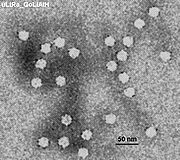


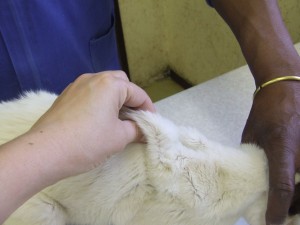
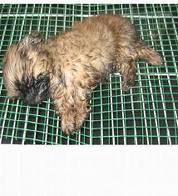
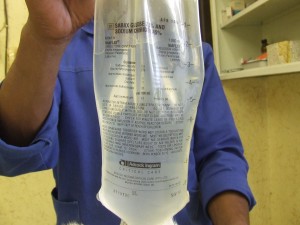
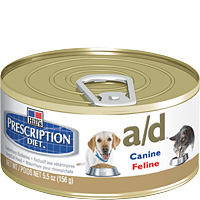
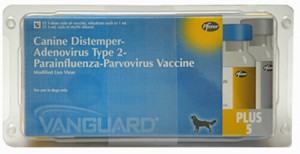

Leave a Reply
You must be logged in to post a comment.